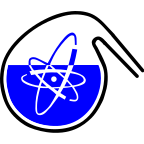Speaker
Description
The nutrient cycle of soils is mainly determined by the concentration of macro and micro nutrients in the soil solution directed by the interactions between the solid phase of soil and the soil solution. These interactions are essential in case of nutrients, such as phosphate anion, strongly binding some soil components. Phosphate anion can precipitate with different cations (e.g. iron, calcium, aluminum) as well as react with the soil organic components. Phosphate ions can be sorbed on soil by different mechanisms, namely weakly, tightly sorbed and precipitated phosphate species were mentioned. The quantity of phosphate uptaken by plants as well as the optimal fertilization depends on the ratio of these phosphate species. The dissolved in water and weakly sorbed phosphate is considered as utilized by plants. The ratio of tightly sorbed phosphate can be significant, but in slow processes this tightly sorbed phosphate can transform to weakly and soluble species.
The ratio of water soluble/weakly sorbed phosphate can be studied by heterogeneous isotope exchange using P-32 labeled phosphate ions; the quantity of water soluble/weakly sorbed phosphate as well as the transport rate of phosphate in a steady state between the soil and soil solution can be determined. In our previous work1, a correct thermodynamic and mathematical model for the evaluation of the heterogeneous isotope exchange of the radioactive P-32 isotope was constructed and tested.
In this work, the sorption and heterogeneous isotope exchange of phosphate of Hungarian soils is studied and using the correct mathematical interpretation of the processes is applied for the determination of the ratio of water soluble/exchangeable to mineralized/organic phosphate after incubation of the soils with different phosphate quantities and time. In plantation experiments, the uptake of phosphorous as well as the change of the water-soluble/exchangeable phosphate is studied under the effect of plantation.
Acknowledgement: The project presented in this article is supported by the EU and co-financed by the European Regional Development Fund under the project GINOP-2.3.2-15-2016-00008. The work was supported by the Hungarian National Research, Development, and Innovation Office (NKFIH K 120265).
Reference
1 Kónya, J., Nagy, N.M., 2015. Determination of water-soluble phosphate content of soil using heterogeneous exchange reaction with 32P radioactive tracer, Soil Tillage Res. 150, 171–179, DOI:10.1016/j.still.2015.01.002

